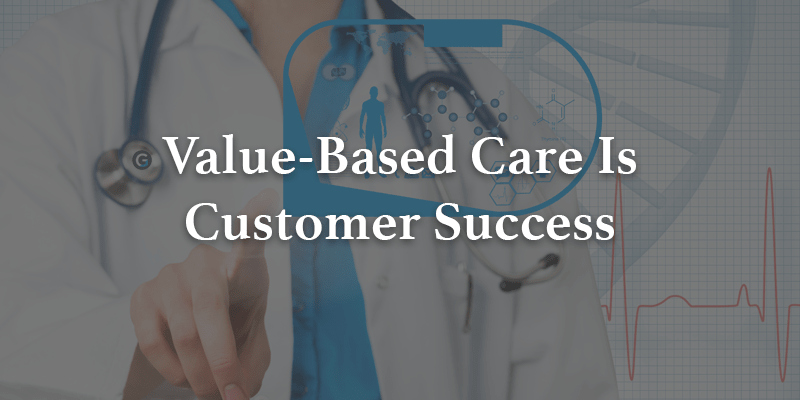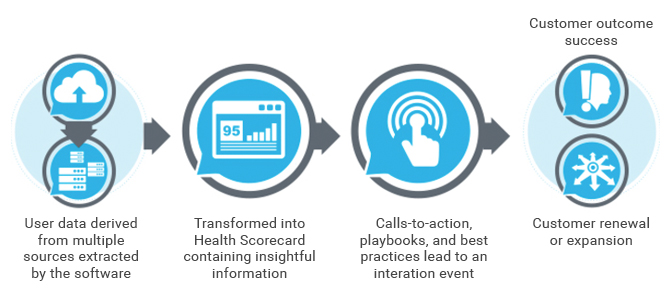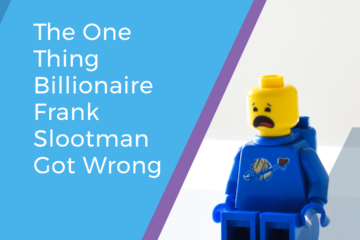
I had to have an ACL replacement last year. I somehow managed to hike out of the Grand Canyon on a fully torn knee ligament! I don’t recommend it. But when I finally arrived in the operating room, there was no account executive to meet me offering a menu of ACLs, anaesthesia options, rehabilitation packages, or pricing tiers. Those were decisions between me and my doctor, and I didn’t really base any of them on fancy features or even on cost. There wasn’t a “premier” or “enterprise” option for replacement ligaments. My one and only decision-making criterion was being able to walk again. My point is that we’re not talking about Coke or Pepsi, Ford or Chevy. We’re talking about mobility or immobility.
In the most extreme cases, we’re talking about life or death.
In a word, we’re talking about “outcomes.” That’s a term that has been ubiquitous in the healthcare industry for decades, now, across every segment. It doesn’t matter whether it’s provider tools, pharmaceuticals, medical devices, biosciences, payer tools, or direct to patient. It doesn’t even matter whether the company interacts directly with patients: when healthcare companies use the word “outcomes,” they’re implicitly recognizing that the standard benchmark for evaluating the industry as a whole is ultimately the health of the patient. Is the patient better off now than they were? Is the patient better off now than they would have been using other methods?
In the Business-to-Business world, talking about customer outcomes is a much more recent development compared to the healthcare industry. It’s a necessary evolution because of how the marketplace has evolved. There’s no need to delve into the comprehensive history of the Customer Success movement—I highly recommend you check out Customer Success: The Book for the whole story—but it’s enough to say that, as an industry, B2B is convinced that the path to sustainable growth in the subscription economy is intrinsically tied to “client outcomes.” Is the customer better off now than they were? Is the customer achieving the goals they set out to accomplish when they purchased the product?
And it isn’t just SaaS. Customer Success began in that world, but it has since expanded to traditional, on-premise companies, infrastructure companies, and yes, healthcare companies. On the surface, it’s not hard to understand why: cloud-based technology is penetrating all of these verticals, and cloud services are paid for with recurring payments. But as you delve deeper, you’ll see how innovation is broadly disrupting our whole economy on a molecular level.
At Gainsight, our basic premise is that if your company has customers, it has a need for Customer Success philosophy, methodology, and technology. And as industries increasingly hone in on the correlation between the client’s outcomes and the company’s outcomes—including the healthcare and healthcare IT industries—we’ll continue to see an increasing emphasis on Customer Success.
Why value-based care is Customer Success
Right now the public debate over healthcare is centered around how much it costs and who pays for it. It’s a fierce debate, but behind the curtain, there’s a completely different conversation happening that traces its beginnings—in part—to a landmark book published just over a decade ago. At the exact same time software companies were beginning to shift from an input-based business model to an output-based one, the healthcare industry was starting its long, arcing turn towards “value-based reimbursement.”
Just to clarify what I mean when I say “output-based,” in the SaaS business, products and services are still typically bought and paid for up front—usually monthly or yearly. However, most sellers expect to break even or take a loss during the first cycle. You only start seeing worthwhile returns when you talk about Lifetime Value, and to earn that renewal, you have to ensure your customers are meeting their goals with your product.
When healthcare providers talk about output-based, or rather value-based reimbursement, they mean a payment system wholly predicated on patient outcomes. In other words, instead of my insurance company paying back the providers for the MRIs, the hospital bed, the surgery, the rehab, and everything else associated with my knee injury à la carte, it compensates the providers based on my (and the patient base in general) health outcome and financial outcome.
Obviously, that’s an oversimplification, but essentially, value-based care aligns my goal of getting healthy with the payer’s goal of reducing costs. It’s no longer a choice between one or the other, it’s both/and. Likewise, Customer Success better aligns the client’s business goals for the product and/or the service purchase with the seller’s goals of getting a better return on investment.
As value-based care continues to take hold in healthcare, it will increasingly impact more than just patient-facing companies. Medical device makers, healthcare IT, insurance companies, bio-sciences, and pharmaceuticals are all at the nexus of the massive economic changes happening in both health and tech.
For more in-depth information on how the so-called “value agenda” is transforming healthcare, I highly recommend this article in the Harvard Business Review. However, beyond the high-level philosophical similarities, there are four practical commonalities between the two:
1. Value-based care is data-driven
Both value-based care and Customer Success are, very practically speaking, extensions of our ever-expanding ability to collect more and more accurate data. It’s the classic question—which came first, the data or the need for data? Either way, in order to enable a business model built around outcomes, we need a way to measure and quantify those outcomes. It just so happens that we have the technology to do that!
McKesson visualizes the process like this:
Replace the word “patient” with “customer,” and you get a classic Customer Success Management (CSM) workflow.
In Gainsight terms, this chart would look something like this:
The underlying assumption here is that the entire process should be measurable. If you have the right tools, it’s relatively straightforward to, say, track the depletion rate of pharmaceuticals, the deployment of medical devices, year-over-year cost reduction, or the hospital readmission rate.
But how do you measure whether my knee treatment was successful? How do you quantify something qualitative?
2. Value-based care requires a closed feedback loop
If you think about the word “value” as a ratio, it looks something like this:
Outcome quality (relative to condition severity)
Cost of treatment
You can increase value by improving the numerator or reducing the denominator or ideally, both. Unfortunately, it’s much easier to measure cost reduction than outcome quality. It’s the same way with Customer Success. The most obvious thing to do is to simply ask the patient/customer. But when we’re talking about reliably measuring statistical trends, it’s all a problem of scale. How do you ask every patient or customer about their outcomes and get an accurate answer? How do you even get an answer at all?! In many cases, providers have trouble operationalizing compliance, let alone honest feedback. Additionally, we’re talking about thousands of patients.
This is a challenge that Customer Success has made huge strides in solving, and apparently, the healthcare industry is already benefiting from what we’ve learned. I was delighted to run across an article in the Harvard Business Review titled, “A Simple Way to Measure Health Care Outcomes.” The thesis of the article compares the NPS metric in business to patient satisfaction scores in healthcare. Click here to learn more about how we think about NPS at Gainsight.
It turns out that patient satisfaction and experience correlate strongly to clinical outcomes, and can therefore be used as an effective proxy for outcome quality measurement. In the same way, we know that NPS correlates strongly to retention, and is therefore an effective leading indicator for future churn.
The challenge, once again, is scaling that kind of qualitative survey outreach to thousands—if not millions—of patients and customers. The solution, once again, is technology.
3. Value-based care is high-tech
Jeroen Tas, Chief Innovation & Strategy Officer at Philips, wrote a deeply insightful article into healthcare industry trends to look forward to in 2017. It shouldn’t be any surprise that each trend he outlined is inherently linked to advancing technology. What may surprise you is how each trend is so closely being mirrored in the Customer Success world.
Tas argues that reimbursements will continue to shift toward a value-based model just as software systems shift toward a recurring revenue model. Subsequently, data and data analysis will become even more integral to the healthcare industry. Patient-reported outcomes will expand and will be segmented in strategically stratified tiers. Feedback loops will be closed to continuously enhance the value delivered to patients by payers and providers.
Furthermore, he predicts expansion of cloud-based services, including virtual care, self-serve, and the Internet-of-Things. Silos between industry segments and providers will break down as big data integration becomes deeper.
Those last two sentences equally describe B2B SaaS as they do healthcare. I highly encourage you to check out the article on LinkedIn.
4. Value-based care is preventative
We know that data provides insights which fuel actions that create reactions and re-impact the data. Technology facilitates and iterates on the data loop to drive positive outcomes at a reduced cost to maximize value—at every level of granularity. It’s important not to lose sight that end user or patient value is only one facet of the transformative power of Customer Success/value-based care. In B2B healthcare, the patient is often an abstract: one data point among many comprising a trend. A single B2B customer may be made up of hundreds of thousands of individual end users, and conceivably, none them could have any face-to-face contact with patients or providers. What’s the immediate worth of talking about patient outcomes to, say, a VP Support at a mid-size Healthcare IT company that’s three or four stages removed from the patient? In other words, what’s in it for her?
At the risk of going too deep down a rabbit hole of analogies, the answer lies in another key aspect of both Customer Success and value-based care: prevention. The truth is that acute events like a freak knee injury account for a relatively small fraction of total healthcare spending. According to the CDC, chronic diseases like heart disease, diabetes, and cancer account for three-quarters of total healthcare spending in the U.S. and about 70% of deaths. With better prevention, we could drastically lower both numbers.
Likewise, your customers are far less likely to churn out of nowhere. If you know where to look, you’ll be able to track habits associated with customer risk and mitigate them. Customer Success is a preventive discipline—there’s a good reason we refer to our software’s risk assessment tool as a “Health scorecard.” We help companies track healthy and unhealthy habits and deploy powerful algorithms to transform those data into effective actions.
Here’s a great example: We know that compliance or adherence correlates very strongly to more positive patient outcomes. Non-compliance correlates strongly to increased costs. Adherence is an effective driver of value by improving the outcome and reducing the cost of care. Unfortunately, it’s hard to track and hard to improve. Fortunately, emerging technology including patient portals, IoT fitness trackers, and even smartphone apps are already making huge impacts in terms of preventive care. Even something as simple as sending a daily text message can double the odds of adherence! Of course, when I read figures like that, I’m instantly thinking about Customer Success. Our data shows that adoption is a strong leading indicator of customer health. The more you use a product or service, the more likely you are to renew. We can typically increase adoption by sending out strategic communications using our platform.
Those actions translate directly into healthier customers who renew, expand, and advocate at a measurably higher rate. The ROI of a healthier citizenry is obvious to experts, and the ROI of healthier customers is becoming increasingly obvious to successful businesses.
Why value-based care needs Customer Success
I absolutely loved my surgeon. The level of care was phenomenal, but one of the last places I ever want to be is back on his operating table. In other words, I hope I never renew. So, isn’t it a little ironic that Customer Success—a discipline so wrapped up in the concepts of retention and expansion—would be such an organic fit for an industry that exists to churn “end users” as efficiently as possible?
Yet we see more and more healthcare companies across the industry are investing heavily in Customer Success professionals and technology every day. Why? It’s no longer enough to sell a product or service. Successful companies in the present and future will be laser-focused on selling outcomes. Seismic shifts in business and in healthcare economics have made outcomes-based—or in other words, value-based—selling an imperative. We’re convinced at Gainsight that pivoting towards outcomes has become the difference between success or complete failure.
Ensuring positive outcomes for clients, end users, and ultimately patients requires an investment of time, energy, money, and strategy. But the ROI is very real. If you’re curious how Customer Success delivered tangible value to a real-world healthcare IT company, check out this case study we did with TigerText.





